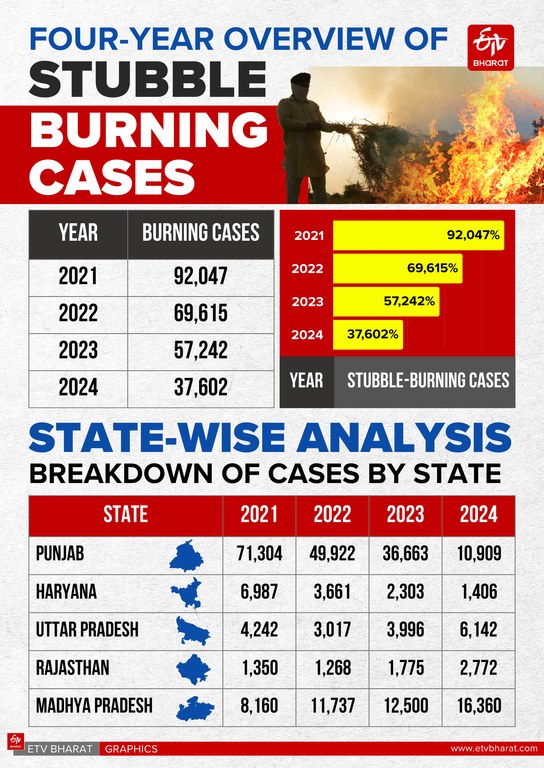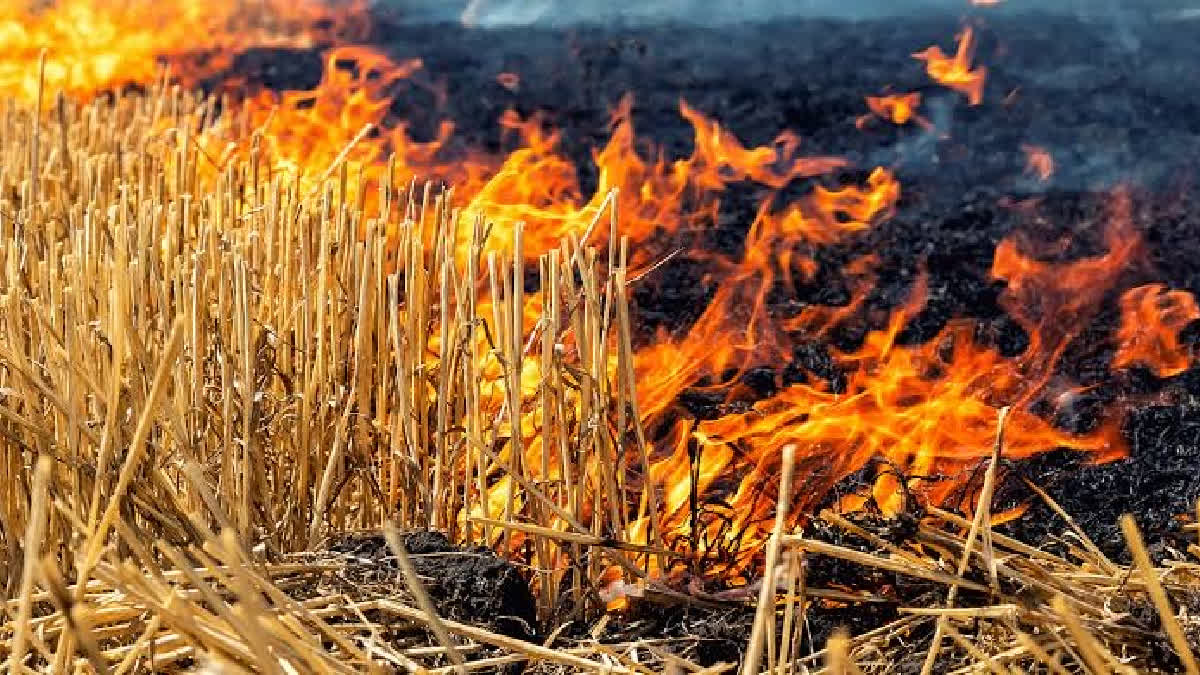New Delhi: The Indian Council of Agricultural Research (ICAR) has unveiled its findings from the satellite-based monitoring of stubble burning across five major agricultural states; Punjab, Haryana, Uttar Pradesh, Rajasthan, and Madhya Pradesh. Conducted between September 15 and November 30, 2024, the study highlights a marked reduction in the overall number of stubble-burning incidents compared to previous years.
According to the ICAR report, stubble-burning cases declined to 37,602 in 2024, representing a 34% drop from 2023 and a staggering 59% reduction since 2021. This data underscores growing awareness among farmers and the impact of various government initiatives to curb the environmentally harmful practice.
Expert Insight
S.N. Mishra, a climate expert and professor at TERI School of Advanced Studies, spoke to ETV Bharat on the issue. "While the reduction in stubble-burning cases is encouraging, the claim of a 70% reduction in Punjab appears overstated. Farmers are increasingly avoiding detection by burning stubble at times not monitored by polar-orbiting satellites," Mishra explained.
He added, "Air pollution in North-West India is influenced by two key factors: aerosol loads and atmospheric conditions. This year, strong post-Diwali winds and the absence of an inversion layer helped prevent a pollution spike. However, high nighttime aerosol loads suggest that pollution levels remain concerning. Effective long-term solutions require consistent policy enforcement, farmer engagement, and economic incentives for sustainable residue management.”
Four-Year Overview of Stubble Burning Cases
Statewise Analysis
The report provides a detailed breakdown of cases by state, showing progress in some areas while highlighting persisting challenges in others.
While Punjab and Haryana reported significant reductions, 70% and 39%, respectively, stubble-burning incidents surged in Uttar Pradesh, Rajasthan, and Madhya Pradesh. Madhya Pradesh recorded 16,360 cases, the highest among the states monitored, reflecting a 31% increase compared to 2023.

Reasons for Success in Punjab and Haryana
Several factors contributed to the success in reducing stubble burning in Punjab and Haryana:
• Sustainable Technologies: Subsidized machinery like happy seeders and super straw management systems facilitated in-situ residue management.
• Awareness Campaigns: Efforts by government bodies and NGOs educated farmers on the harmful environmental impact of stubble burning.
• Policy Interventions: Stricter enforcement of penalties and financial incentives under the Commission for Air Quality Management (CAQM) played a pivotal role in deterring the practice.
Challenges In Other States
The increase in stubble-burning cases in Uttar Pradesh, Rajasthan, and Madhya Pradesh highlights gaps in policy implementation and technology accessibility. Madhya Pradesh’s 31% increase in cases underlines the need for region-specific strategies and a stronger focus on farmer support.
Impact on Air Quality
Stubble burning has long been a key contributor to the winter air pollution crisis in North India. The decline in incidents in Punjab and Haryana has had a noticeable impact, improving air quality during the post-Diwali period. However, experts caution that rising cases in other states could offset these gains, emphasizing the need for a nationwide approach to tackle this issue comprehensively.
The ICAR report paints a mixed picture of progress and challenges. While the overall decline in stubble-burning incidents is a step in the right direction, the surge in cases in certain states demands urgent attention. Experts call for consistent policy enforcement, increased financial incentives for sustainable practices, and continuous engagement with farmers to eliminate the practice altogether.
As Mishra aptly noted, “The problem is not just seasonal but systemic. Long-term solutions will require integrating economic, technological, and environmental strategies to achieve lasting results.”
The success in Punjab and Haryana offers a blueprint for addressing the issue across India. Still, achieving cleaner air for all will require coordinated efforts and sustained commitment at all levels.



